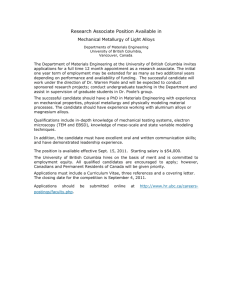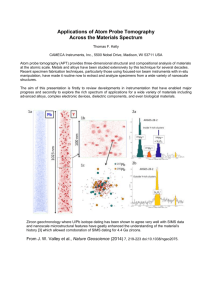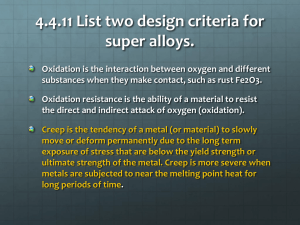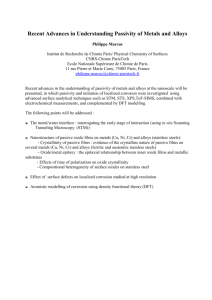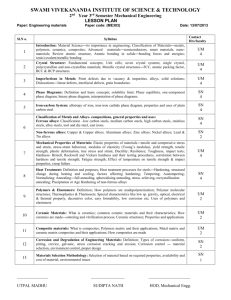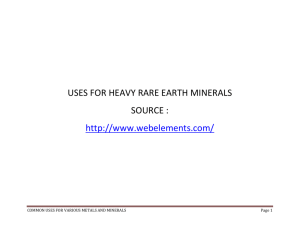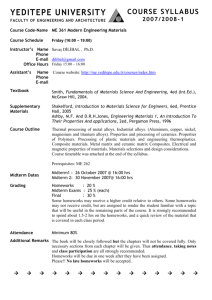Cobalt-Base Wear-Resistant Alloys
advertisement
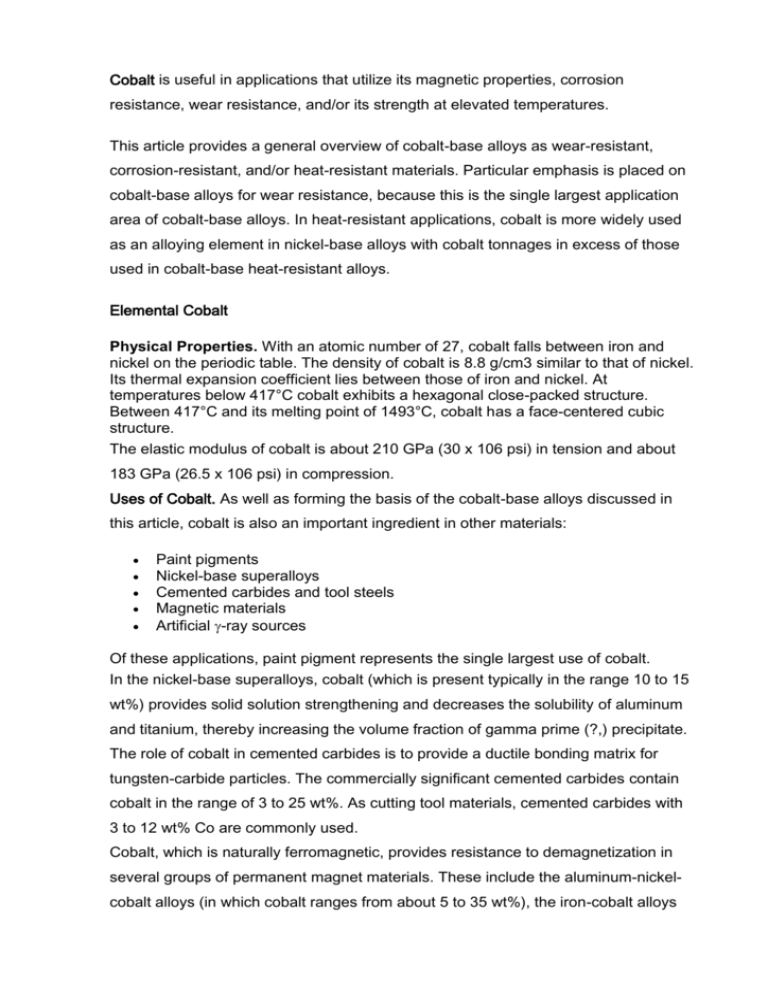
Cobalt is useful in applications that utilize its magnetic properties, corrosion resistance, wear resistance, and/or its strength at elevated temperatures. This article provides a general overview of cobalt-base alloys as wear-resistant, corrosion-resistant, and/or heat-resistant materials. Particular emphasis is placed on cobalt-base alloys for wear resistance, because this is the single largest application area of cobalt-base alloys. In heat-resistant applications, cobalt is more widely used as an alloying element in nickel-base alloys with cobalt tonnages in excess of those used in cobalt-base heat-resistant alloys. Elemental Cobalt Physical Properties. With an atomic number of 27, cobalt falls between iron and nickel on the periodic table. The density of cobalt is 8.8 g/cm3 similar to that of nickel. Its thermal expansion coefficient lies between those of iron and nickel. At temperatures below 417°C cobalt exhibits a hexagonal close-packed structure. Between 417°C and its melting point of 1493°C, cobalt has a face-centered cubic structure. The elastic modulus of cobalt is about 210 GPa (30 x 106 psi) in tension and about 183 GPa (26.5 x 106 psi) in compression. Uses of Cobalt. As well as forming the basis of the cobalt-base alloys discussed in this article, cobalt is also an important ingredient in other materials: Paint pigments Nickel-base superalloys Cemented carbides and tool steels Magnetic materials Artificial -ray sources Of these applications, paint pigment represents the single largest use of cobalt. In the nickel-base superalloys, cobalt (which is present typically in the range 10 to 15 wt%) provides solid solution strengthening and decreases the solubility of aluminum and titanium, thereby increasing the volume fraction of gamma prime (?,) precipitate. The role of cobalt in cemented carbides is to provide a ductile bonding matrix for tungsten-carbide particles. The commercially significant cemented carbides contain cobalt in the range of 3 to 25 wt%. As cutting tool materials, cemented carbides with 3 to 12 wt% Co are commonly used. Cobalt, which is naturally ferromagnetic, provides resistance to demagnetization in several groups of permanent magnet materials. These include the aluminum-nickelcobalt alloys (in which cobalt ranges from about 5 to 35 wt%), the iron-cobalt alloys (approximately 5 to 12 wt%). and the cobalt rare-earth intermetallics (which have some of the highest magnetic properties of all known materials). The artificial isotope cobalt-60 is an important ?-ray source in medical and industrial applications. Cobalt-Base Alloys As a group, the cobalt-base alloys may be generally described as wear resistant, corrosion resistant, and heat resistant (strong even at high temperatures). As a group, the cobalt-base alloys may be generally described as wear resistant, corrosion resistant, and heat resistant (strong even at high temperatures). Many of the properties of the alloys arise from the crystallographic nature of cobalt (in particular its response to stress), the solid-solution-strengthening effects of chromium, tungsten, and molybdenum, the formation of metal carbides, and the corrosion resistance imparted by chromium. Generally the softer and tougher compositions are used for high-temperature applications such as gas-turbine vanes and buckets. The harder grades are used for resistance to wear. Historically, many of the commercial cobalt-base alloys are derived from the cobaltchromium-tungsten and cobalt-chromium-molybdenum ternaries first investigated by Elwood Haynes in the beginning of 20th century. He discovered the high strength and stainless nature of the binary cobalt-chromium alloy, and he later identified tungsten and molybdenum as powerful strengthening agents within the cobaltchromium system. When he discovered these alloys, Haynes named them the Stellite alloys after the Latin stella (star), because of their star-like luster. Having discovered their high strength at elevated temperatures, Haynes also promoted the use of Stellite alloys as cutting tool materials. Cobalt-Base Wear-Resistant Alloys The cobalt-base wear alloys of today are little changed from the early alloys of Elwood Haynes. The most important differences relate to the control of carbon and silicon (which were imparities in the early alloys). Indeed, the main differences in the current Stellite alloy grades are carbon and tungsten contents (hence the amount and type of carbide formation in the microstructure during solidification). Carbon content influences hardness, ductility, and resistance to abrasive wear. Tungsten also plays an important role in these properties. Chemical composition of Stellite alloys is approximately: Cr ~ 25-30% Mo = 1% max W = 2-15% C ~ 0.25-3.3% Fe = 3% max Ni = 3% max Si = 2% max Mn = 1% max. Co = rest of balance Types of wear. There are several distinct types of wear which generally fall into three main categories: Abrasive wear Sliding wear Erosive wear. The type of wear encountered in a particular application is an important factor that influences the selection of a wear-resistant material. Abrasive wear is encountered when hard particles, or hard projections (on a counterface) are forced against, and moved relative to a surface. The terms high and low stress abrasion relate to the condition of the abrasive medium (be it hard particles or projections) after interaction with the surface. If the abrasive medium is crushed, then the high stress condition is said to prevail. If the abrasive medium remains intact, the process is described as low stress abrasion. Typically, high stress abrasion results from the entrapment of hard particles between metallic surfaces (in relative motion), while low stress abrasion is encountered when moving surfaces come into contact with packed abrasives, such as soil and sand. In alloys such as the cobalt-base wear alloys, which contain a hard phase, the abrasion resistance generally increases as the volume fraction of the hard phase increases. Abrasion resistance is, however, strongly influenced by the size and shape of the hard phase precipitates within the microstructure and the size and shape of the abrading species. Sliding Wear. Of the three major types of wear, sliding is perhaps the most complex, not in concept, but in the way different materials respond to sliding conditions. Sliding wear is a possibility whenever two surfaces are forced together and moved relative to one another. The chances of damage are increased markedly if the two surfaces are metallic in nature, and if there is little or no lubrication present. Cobalt-Base High-Temperature Alloys For many years, the predominant user of high-temperature alloys was the gas turbine industry. In the case of aircraft gas turbines, the chief material requirements were elevated-temperature strength, resistance to thermal fatigue, and oxidation resistance. For land-base gas turbines, which typically burn lower grade fuels and operate at lower temperatures, sulfidation resistance was the major concern. Today, the use of high-temperature alloys is more diversified, as more efficiency is sought from the burning of fossil fuels and waste, and as new chemical processing techniques are developed. In general, cobalt-base high-temperature alloys have the following chemical composition: Cr = 20-23% W = 7-15% Ni = 10-22% Fe = 3% max C = 0.1-0.6% Co = rest of balance. Although cobalt-base alloys are not as widely used as nickel and nickel-iron alloys in high-temperature applications, cobalt-base high-temperature alloys nevertheless play an important role, by virtue of their excellent resistance to sulfidation and their strength at temperatures exceeding those at which the gamma-prime- and gammadouble-prime-precipitates in the nickel and nickel-iron alloys dissolve. Cobalt is also used as an alloying element in many nickel-base high-temperature alloys. Cobalt-Base Corrosion-Resistant Alloys Although the cobalt-base wear-resistant alloys possess some resistance to aqueous corrosion, they are limited by grain boundary carbide precipitation, the lack of vital alloying elements in the matrix (after formation of the carbides or Laves precipitates) and, in the case of the cast and weld overlay materials, by chemical segregation in the microstructure. By virtue of their homogeneous microstructures and lower carbon contents, the wrought cobalt-base high-temperature alloys (which typically contain tungsten rather than molybdenum) are even more resistant to aqueous corrosion, but still fall well short of the nickel-chromium-molybdenum alloys in corrosion performance. To satisfy the industrial need for alloys which exhibit outstanding resistance to aqueous corrosion, yet share the attributes of cobalt as an alloy base (resistance to various forms of wear, and high strength over a wide range of temperatures), several low-carbon, wrought cobalt-nickel-chromium-molybdenum alloys are produced. Chemical composition of these alloys is: Cr = 20-25% W = 2% Mo = 5-10% Ni = 9-35% Fe = 3% max C = 0.8% max N = 0.1% max Co = rest of balance.
